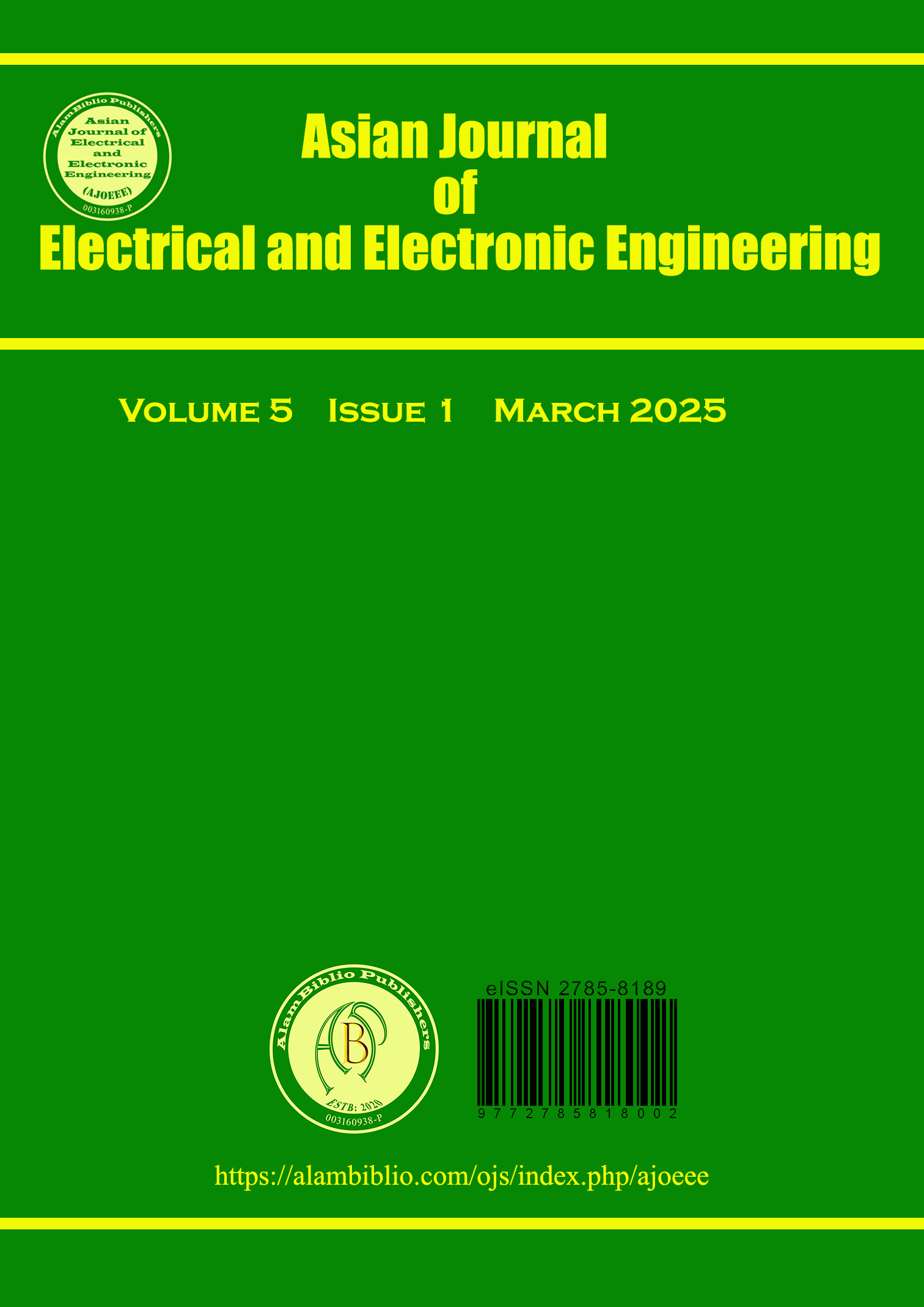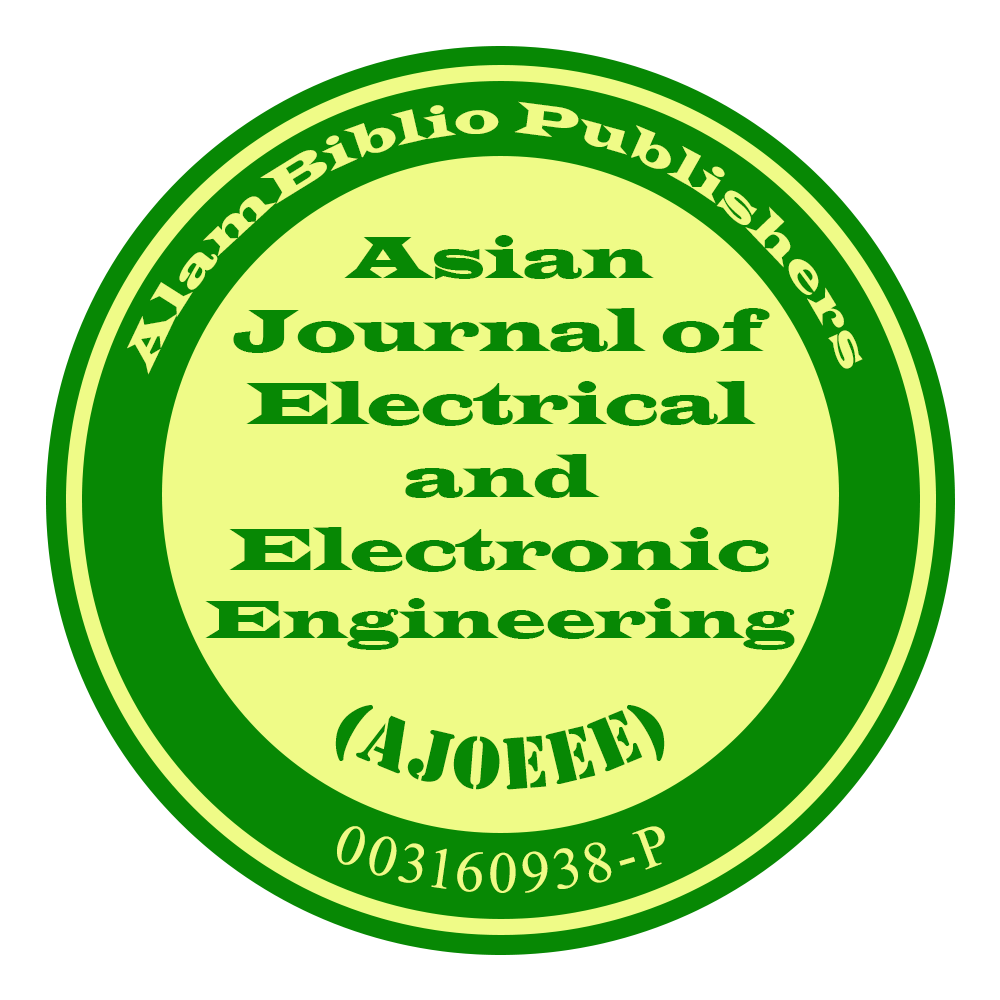Design and Analysis of Digital Control Buck Converter for optimum performance
DOI:
https://doi.org/10.69955/ajoeee.2025.v5i1.74Keywords:
Buck Converter, Pulse Width Modulation (PWM), PI controllerAbstract
This paper aims to design and analyze a digitally controlled buck converter meant for applications requiring DC voltage under varying input voltages and load conditions. The buck converter is designed with a switching frequency of 40 kHz, an inductor value of 200 µH, and a capacitor of 100 µF with Pulse Width Modulation (PWM). The Proportional-Integral (PI) controller is used to maintain the output voltage steady. For simulation and performance evaluation, PSpice and MATLAB/Simulink software are selected. This paper aims to create a digital control system that is better than the traditional analog controllers, offering precise and adaptive regulation. The simulation results highlight how effective the digital PI controller is at reducing voltage ripple and maintaining the output voltage, even when the inputs and loads vary. This study covers detailed parameter calculations, controller design, circuit simulation, and performance analysis, providing a thorough overview of the digitally controlled buck converter system.
Downloads
References
[1] 2021 18th International Multi-Conference on Systems, Signals & Devices (SSD), Monastir, Tunisia: IEEE, Mar. 2021, pp. 1419-1424. https://doi.org/10.1109/SSD52085.2021.9429371 DOI: https://doi.org/10.1109/SSD52085.2021.9429371
[2] H. Sucu, T. Göktaş, and M. Arkan, "Design, Simulation and Application of Buck Converter with Digital PI Controller," Balk. J. Electr. Comput. Eng., vol. 9, no. 2, Art. no. 2, Apr. 2021. https://doi.org/10.17694/bajece.884290 DOI: https://doi.org/10.17694/bajece.884290
[3] Gao, Linghao. (2025). Review of DC-DC Converters: Analysis and Applications of Buck and Boost Converters. Applied and Computational Engineering. 148. 14-18. https://doi.org/10.54254/2755-2721/2025.22314 DOI: https://doi.org/10.54254/2755-2721/2025.22314
[4] J. Linares-Flores et al., "Sliding Mode Control Based on Linear Extended State Observer for DC-to-DC Buck-Boost Power Converter System With Mismatched Disturbances," IEEE Trans. Ind. Appl., vol. 58, no. 1, pp. 940-950, Jan. 2022. https://doi.org/10.1109/TIA.2021.3130017 DOI: https://doi.org/10.1109/TIA.2021.3130017
[5] Current waveform of each part. (1). Page 2. 2/6. Application Note. Capacitor Calculation for Buck converter IC. © 2012 ROHM Co., Ltd. No. 61AN104E Rev.004.https://fscdn.rohm.com/en/products/databook/applinote/ic/power/switching_regulator/capacitor_calculation_appli-e.pdf
[6] R. W. Erickson and D. Maksimović, Fundamentals of Power Electronics. Cham: Springer International Publishing, 2020. https://doi.org/10.1007/978-3-030-43881-4 DOI: https://doi.org/10.1007/978-3-030-43881-4
Downloads
Published
Issue
Section
License
Copyright (c) 2025 AlamBiblilo Publishers

This work is licensed under a Creative Commons Attribution-NonCommercial 4.0 International License.
The Asian Journal of Electrical and Electronic Engineering journal is licensed under a Creative Commons Attribution-NonCommercial 4.0 International License.










